24 Stunning Buddhist Temples in Korea You Can Visit
Last Updated on May 31, 2024
There are around 900 traditional Buddhist temples in Korea inviting one and all in for quiet meditation and calm surroundings. Ranging in size with some only consisting of a few buildings while others have dozens, they all have one thing in common and that is how stunning they are.
From the temples that sit smack dab in the middle of the city to ones that require a hike a couple hours into lush mountains, they are all intricately painted and adorned with gorgeous religious relics inside and out. Some look out at oceans and some look out onto valleys. Some have statues that tower high above everything around and some are small fitting inside of a cave.

These are the 24 most stunning Buddhist temples in Korea. Pro tip: If you visit in the spring, you’ll be able to see lanterns strung up on temple grounds decorating them from top to bottom in celebration of Buddha’s Birthday. Visit in the fall and you’ll see the colorful temples stand out amongst the reds, yellows, and oranges of the leaves. They seem to look so striking in the autumn.
You can see some amazing temples in Korea. Get ready!
- A Brief History of Buddhism in Korea
- How many Buddhist temples are there in South Korea?
- Etiquette when visiting a Buddhist temple in Korea
- Buddhist Temples in Korea To Visit
- Suguksa Temple (수국사)
- Gakwonsa Temple (각원사)
- Saseongam Hermitage (사성암)
- Haedong Yonggungsa Temple (해동용궁사)
- Haeinsa Temple (해인사)
- Seokbulsa Temple (석불사)
- Sanbangsa Temple & Grotto (산방굴사)
- Daewonsa Temple (대원사)
- Seoknamsa Temple (석남사-울산)
- Hwagyesa Temple (화계사)
- Ssanggyesa Temple (쌍계사)
- Tongdosa Temple (통도사)
- Bongwonsa Temple (봉원사)
- Guinsa Temple (구인사)
- Sudeoksa Temple (수덕사)
- Naksansa Temple (낙산사)
- Tapsa Temple (탑사)
- Bongeunsa Temple (봉은사)
- Baekyangsa Temple (백양사)
- Mangwolsa Temple (망월사)
- Waujeongsa Temple (와우정사)
- Jingwansa Temple (진관사)
- Dongguksa Temple (동국사)
- Nammireuksa Temple (남미륵사)
- Temples in Korea FAQ
(This post contains affiliate links, which means I receive a certain percentage of a sale if you purchase after clicking. These funds go to maintain the site. Thank you for your support.)
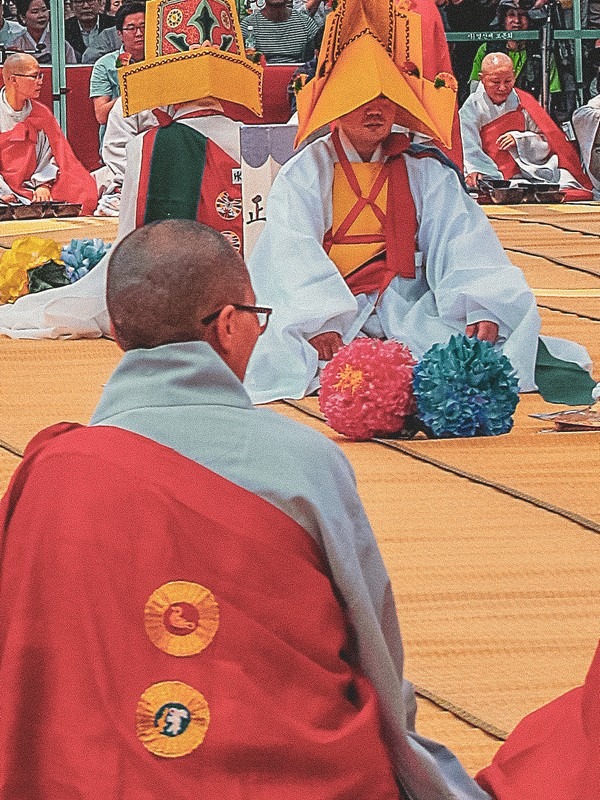
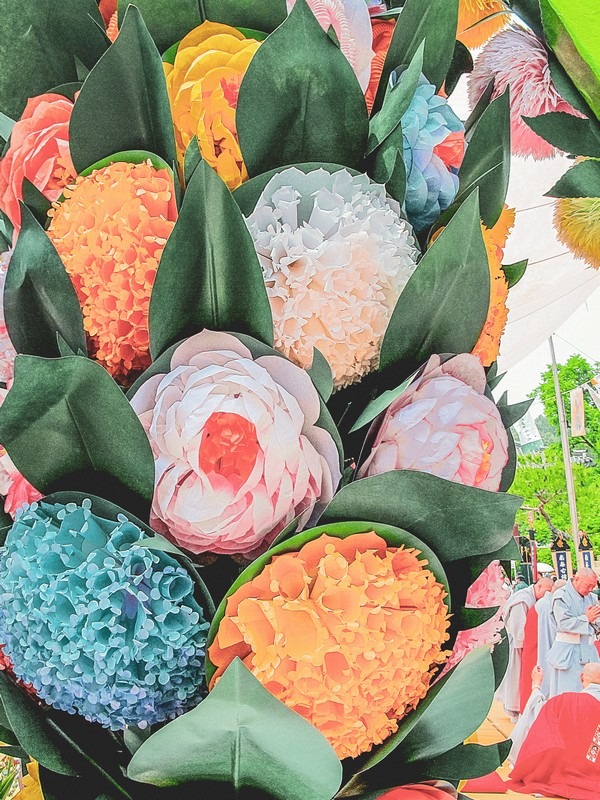
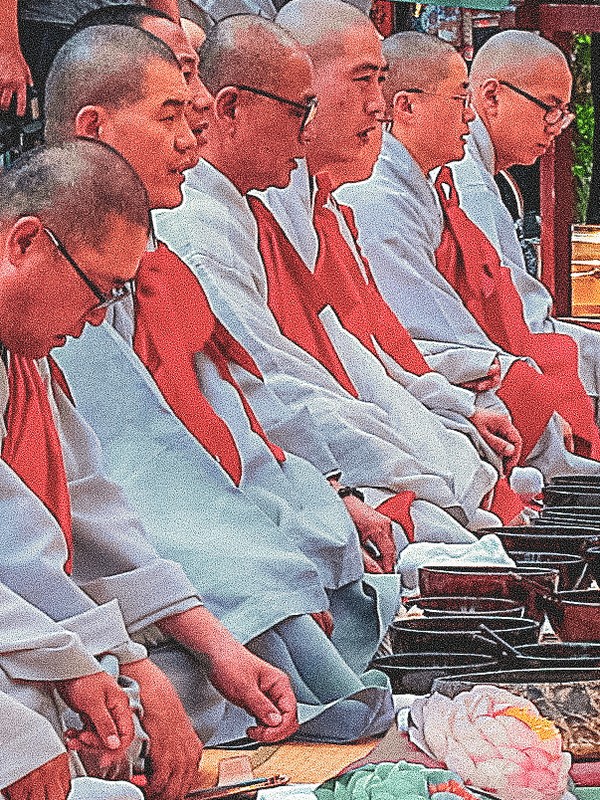
A Brief History of Buddhism in Korea
Buddhism first came to Korea and was adopted by the Goguryeo Kingdom in 372CE. Later it was adopted by the Silla Kingdom in 528CE and then the Baekje also adopted it in 552CE. By 668, Silla had unified the peninsula and Buddhism was the state religion which allowed for a prosperous time for Buddhist arts and temple architecture which continued through the Goryeo Dynasty.
However, when the Joseon Dynasty took control, the rulers tried to have all influences of Buddhism removed from the government in order to adopt Confucianism as the guiding principle. Throughout the five centuries of Joseon, efforts to revive Buddhism were met with opposition and so most temples you see today are in the mountains as they were thrust from the cities.
The most common orders of Buddhism in Korea are the Jogye and Taego Orders. Today, there is not a national religion in South Korea. Approximately 46% of people consider themselves free of religious affiliation, 29% are Christian, and 23% are Buddhist. That said, you’ll notice that various cultural rites and activities have come through the lengthy Buddhist history in Korea so many people will partake in various activities that they now consider to just be Korean though has Buddhist origins.
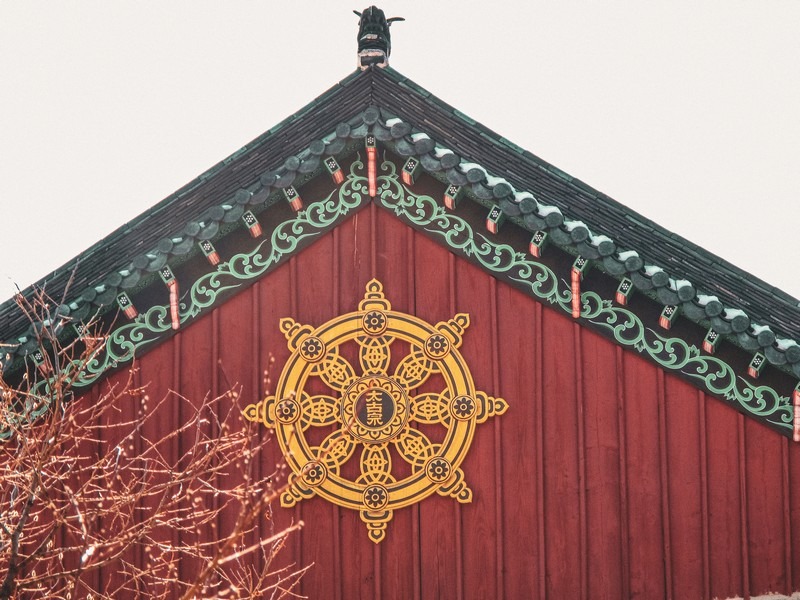
How many Buddhist temples are there in South Korea?
There are over 900 Buddhist temples in South Korea. From seaside temples to temples in mountainous regions and temples smack dab in the middle of massive cities, there are Buddhist temples all around South Korea.
Etiquette when visiting a Buddhist temple in Korea
It’s important to remember that Buddhist temples in Korea are sacred places of worship. While they are welcoming of visitors and tourists, you will often see Buddhists praying and practicing so it’s important to be aware of the etiquette expected of you.
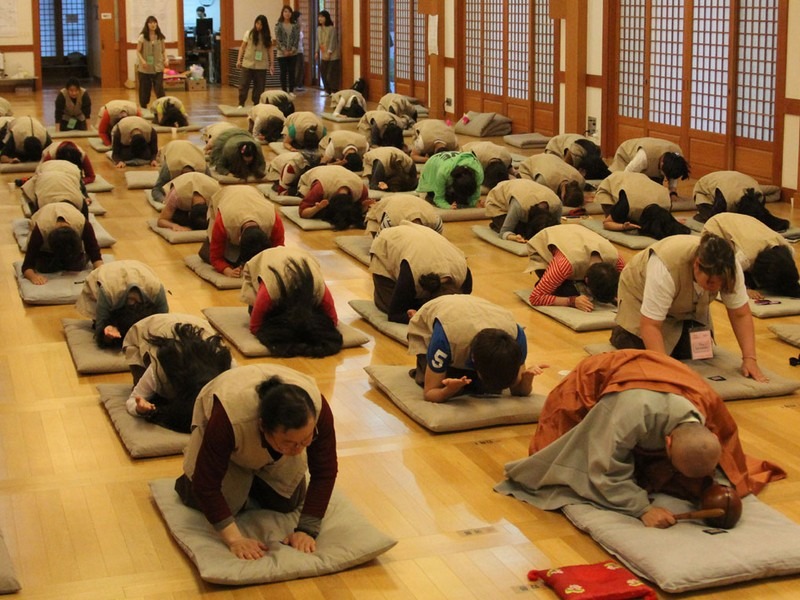
I’ve visited both as a tourist and for prayers with my Korean mother-in-law who is Buddhist and here are some general guidelines to follow:
- Wear appropriate clothing: Much like any religious space you enter, you should be respectful and modest with your clothing. Covered shoulders, no hats. These are a good rule of thumb.
- Remove your shoes: If you will enter the prayer halls, be sure to take off your shoes. You will usually notice a sign on the steps near the entrances reminding you.
- Keep the calm atmosphere: Temples, though they can be quite touristy at times, should be calm and collected. Don’t play loud music or talk loudly and remind your kids to be respectful of those around them.
- Photography rules: You’re generaly fine to take photos, however you should not take photos inside of the halls, especially during services or while people are meditating and praying. If the hall doors are open, you can take a photo of the inside from the outside, but be aware of people because Korean privacy laws are serious, but also, you should always respect the locals practicing first and foremost.
- Don’t open closed doors: Most if not all of the temples you’re likely to visit are working temples which means there are monks living on the premises. If a door is closed, don’t assume you can or should open it and enter.
- Enter the halls from the side: Generally, unless directed otherwise by signs, you should take off your shoes and enter halls from the side entrances as the front door is for the practicing monks. That said, I’ve been to a few temples where we were invited in via the front entrance by a monk. In that case, follow the direction.
- Feel free to prostrate: You are welcome to pray, prostrate, or meditate inside of a temple in Korea. Stay to the side or back as the front is for the monks. But, look for a pillow pad and if there is one, you can use it.
- Don’t touch: This goes for relics and pieces of art inside the temples as well as the monks on the grounds. Keep your hands to yourself.
- No graffiti. No drinking. No smoking.: Some things should be obvious, but just in case, remember that all of statues, pagodas, stupas, and buildings are holy relics so you should no scratch, sit, or write on them. While you can have snacks at temples, do not drink alcohol or smoke.

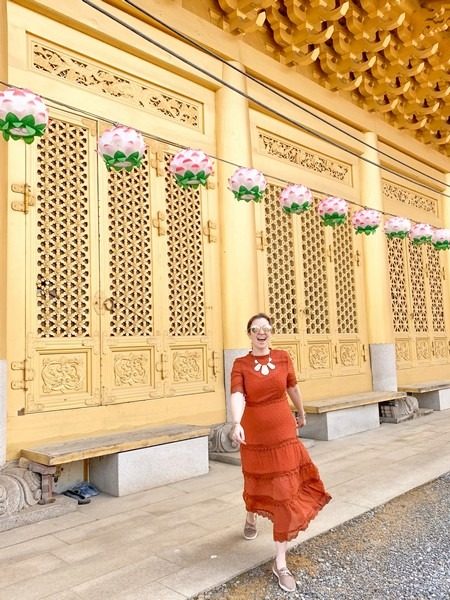
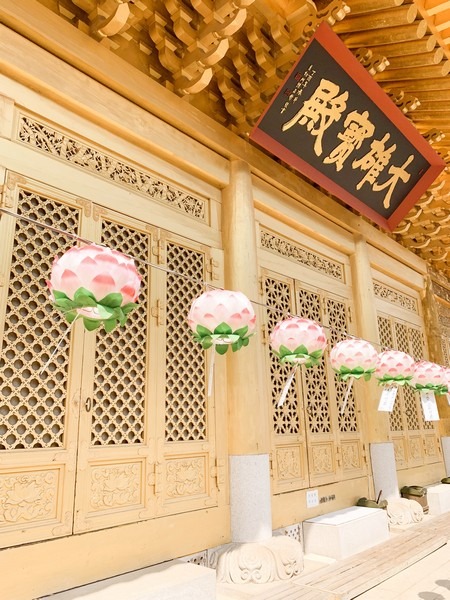
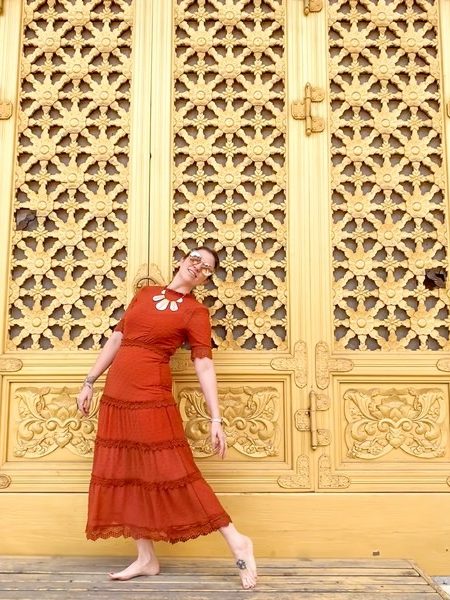
1. Suguksa Temple (수국사)
Location: Seoul, Korea
Hidden away in the northwestern district of Eunpyeong-gu in Seoul, this golden temple shimmers and shines in the sunlight. Truly a special sight, this is the only golden temple in Seoul and one of only two in all of Korea and yet for some reason, unlike Kyoto’s famous Kinkaku-ji, this golden temple is relatively unknown to most.
Suguksa Temple was originally established during the Joseon Dynasty by King Sejo to honor his deceased son. Built in 1459, the temple was intended to provide treatments for members of the royal family who were afflicted with mental ailments.
It’s quiet, off the beaten path and just stunning especially if you visit in the spring before Buddha’s birthday to see all of the lotus lanterns hanging around the temple. If you visit, also head just up the road to walk along the paths of the Seooreung Royal Tombs.
- Address: Eunpyeong-gu, Seooreung-ro 23-gil 8-5 (은평구 서오릉로23길 8-5 (구산동))
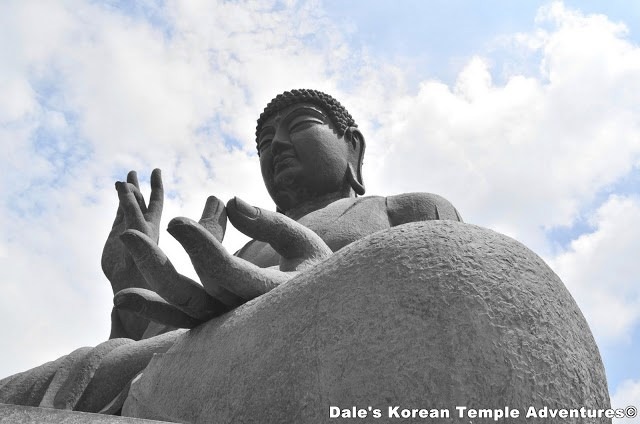
2. Gakwonsa Temple (각원사)
Location: Cheonan, Korea
Set at the foot of Mt. Taejosan, this temple requires a climb up 203 steep steps in order to see the equally massive 15 meter tall statue of Amita-bul, or The Buddha of the Western Paradise.
First started in 1976, the statue was the largest statue in Korea until The Future Buddha was constructed at Beopjusa Temple in 1988. The statue here is far more stunning though and weighs in at a massive 60 tons of bronze. The temple grounds are expansive and the buildings are elaborately decorated. Large Buddhas and Bodhisattvas are housed in the halls begging any visitor to peer into each building as you pass.
- Address: 245 Gakwonsa-gil Dongnam-gu, Cheonan-si, Korea (충청남도 천안시 동남구 각원사길 245)
- Contributed By: Dale’s Korean Temple Adventures
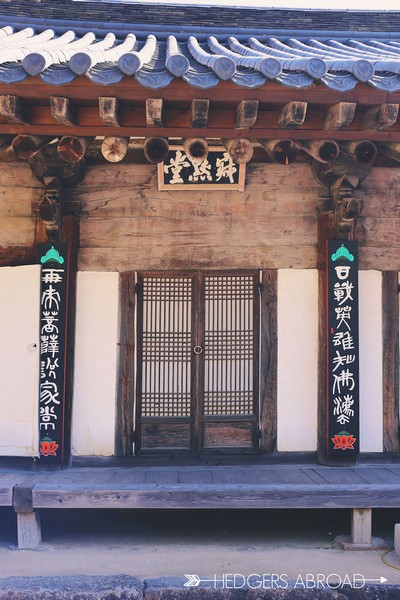
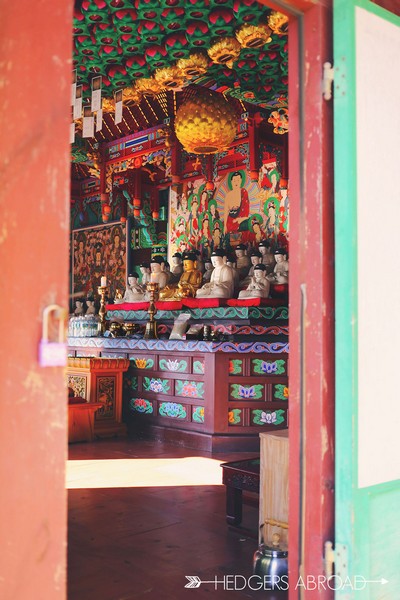
3. Saseongam Hermitage (사성암)
Location: Gurye, Korea
Located in the beautiful Gurye valley just west of Jirisan National Park, Saseongam Hermitage is as mesmerizing as the view of the surrounding mountains. Near the top of Osan Mountain, this hermitage allows visitors to explore this truly unique and atypical Buddhist compound. With giant columns holding aloft a small prayer hall at its center, it’s clear that this place is special.
Wandering the temple, basking in the afternoon sun while peacefully observing the surrounding area, and hiking to the bonus shrines near the mountain’s summit are all prime activities for visitors to Saseongam. Bonus points are awarded to visitors who hike all the way to this beautiful hermitage instead of using the taxis waiting at the bottom.
- Address: 303 Saseongam-gil, Muncheok-myeon, Gurye-gun, Jeollanam-do (전라남도 구례군 문척면 사성암길 303)
- Submitted By: Hedgers Abroad
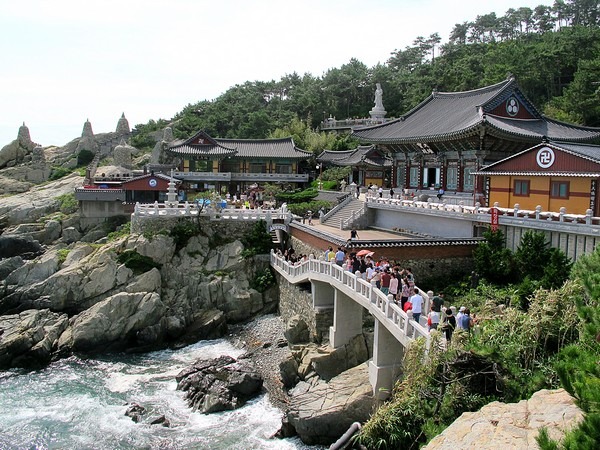
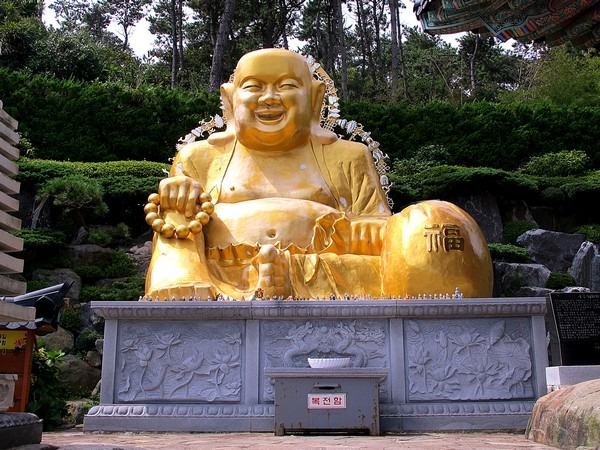
4. Haedong Yonggungsa Temple (해동용궁사)
Location: Busan, Korea
Built looking out at the ocean, this unique aspect truly makes Haedong Yonggung Temple enthralling. A winding staircase with 108 steps representing the 108 agonies of earthly desire leads down to this temple that can be translated to mean Korean Dragon Palace Temple. Doesn’t that make it sound even more enticing?
Golden statues sit on rock cliffs and the quiet surroundings of most temples is combined with the lapping of the ocean waves here. Truly a must-see in Busan, Korea.
- Tour Option: Join a day trip tour with Klook to visit Haedong Yonggung Temple along with a visit to the gorgeously colorful Gamcheon Culture Village and the fun Busan Skywalk.
- More Information On The Area: Busan, Korea: Everything You MUST See, Do, Eat & Try!
- Address: 86 Yonggung-gil, Gijang-eub, Gijang-gun, Busan (부산광역시 기장군 기장읍 용궁길 86)
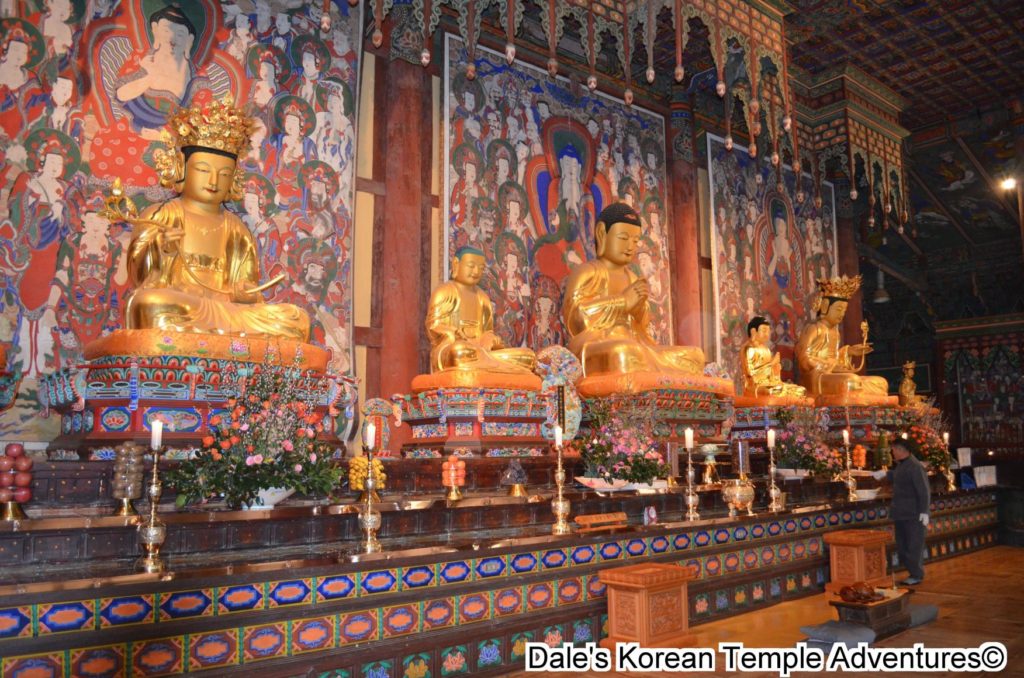
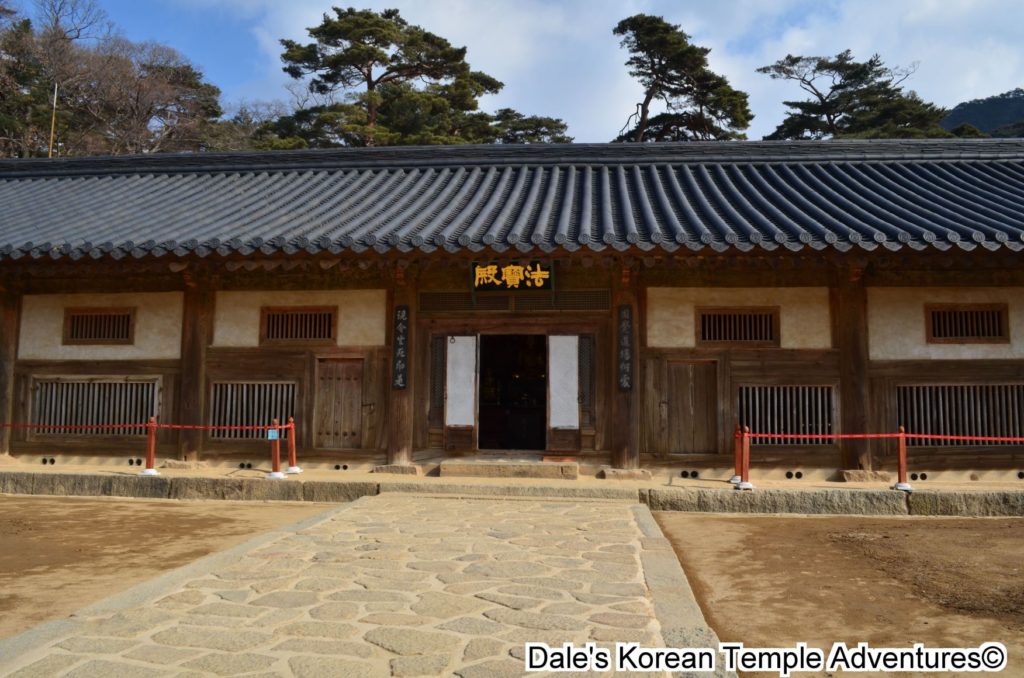
5. Haeinsa Temple (해인사)
Location: Hapcheon, Korea
This temple is rich in history and has a lot of Korean cultural significance. While it can be a bit of a chore to get to, once there, the main hall is gorgeous and the shrine halls, pagodas and relics are numerous. Chief among the must-see relics on the grounds are the 81,258 wooden blocks of the Tripitaka Koreana.
First made in 1087, these are the world’s most comprehensive and oldest intact version of the Buddhist canon in Hanja script. As photos of the script are strictly prohibited, this is truly a temple you have to see in person to believe.
- Tour Option: Join a day trip tour with Klook to visit the legendary Haeinsa Temple as well as the Hapcheon Movie Theme Park where ‘Fighter in the Wind’ and ‘Seoul 1945’ were filmed and then visit the Illumia Light Festival.
- Address: 122 Haeinsa-gil, Gaya-myeon, Habcheon-gun, Gyeongsangnam-do (경상남도 합천군 가야면 해인사길 122)
- Contributed By: Dale’s Korean Temple Adventures
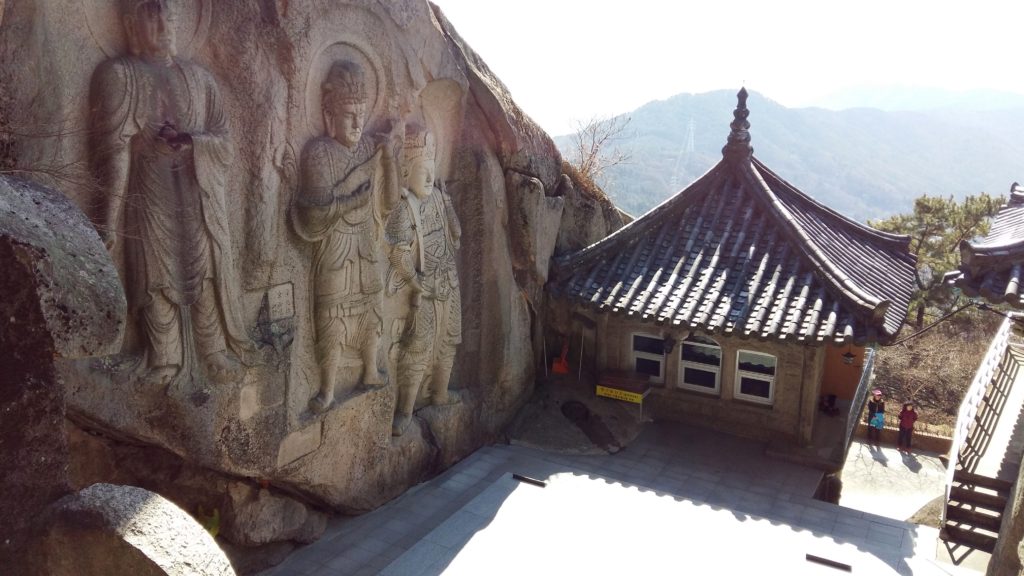
6. Seokbulsa Temple (석불사)
Location: Busan, Korea
Along with its many beaches and mountains, Busan has several beautiful temples to explore. One of the favorites among locals and expats is Seokbulsa Temple – high up in the hills of Mount Geumjeongsan.
Once you reach the top you will be greeted by a colorful temple entrance where you can then explore nooks and crannies of this stone temple. Seokbulsa is like no other temple in Busan; many warriors and Buddhas are carved into the stone walls that reach great heights. And the view is definitely worth the steep climb to the top. Everyone should visit Seokbulsa Temple when they visit Busan!
- Address: 1 Mandeok-dong, Buk-gu, Busan (부산광역시 북구 만덕동 1)
- Contributed By: Expat and the City
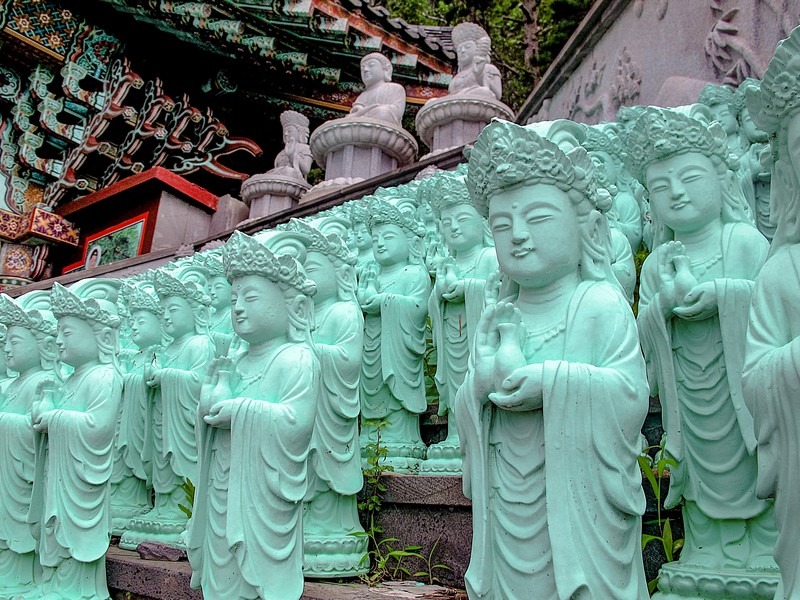
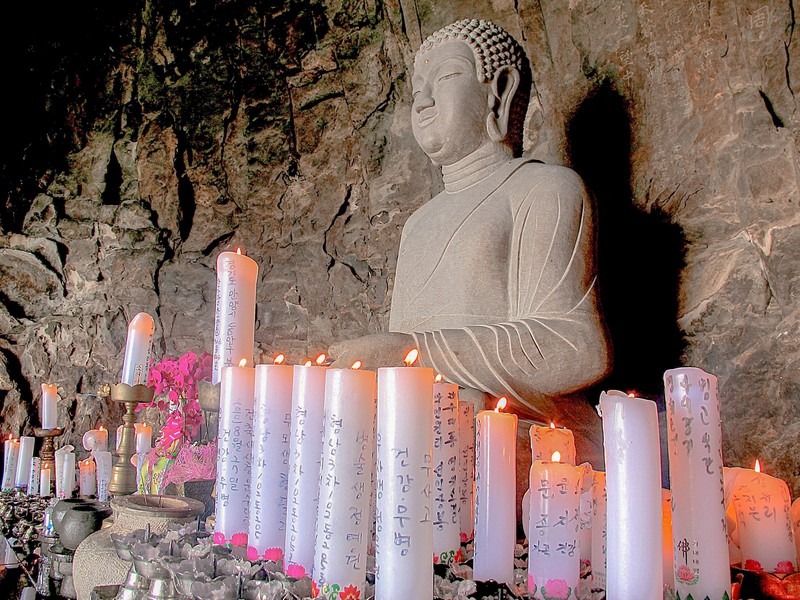
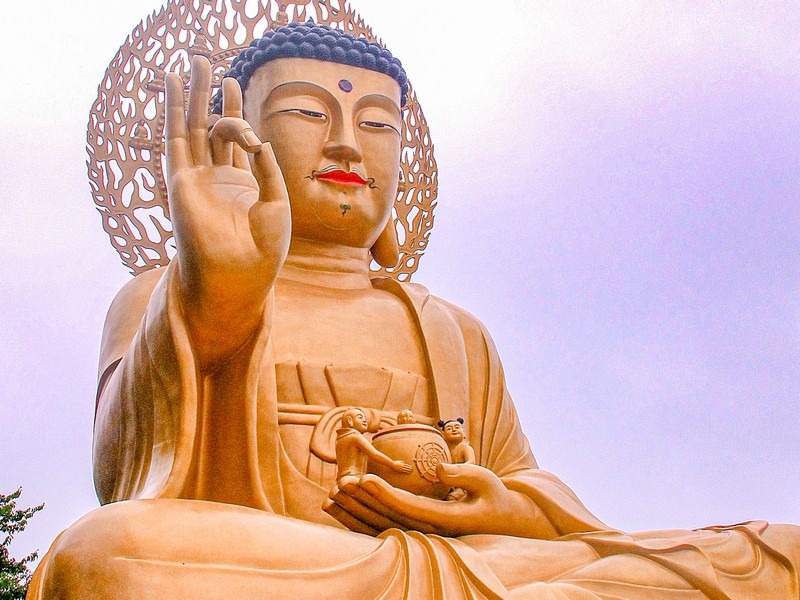
7. Sanbangsa Temple & Grotto (산방굴사)
Location: Jeju, Korea
Said to have once been the peak of Mt. Halla that broke off and was thrown to the spot on which it now sits in the southwest of Jeju Island, Sanbang mountain is now home to two Buddhist temples and a grotto.
Whichever legend you wish to believe, the one with a hunter and a deer or a goddess and the mortal boy she fell in love with, the mystique around this mountain and the temples that sit upon it is thick with charm and intrigue and worth every step up to the top to see the grotto and the statues within it. Don’t miss a trip to Sanbang Temple when you visit Jeju next.
- Address: 218-10 Sanbang-ro, Andeok-myeon, Seogwipo-si, Jeju Island (제주특별자치도 서귀포시 안덕면 산방로 218-10)
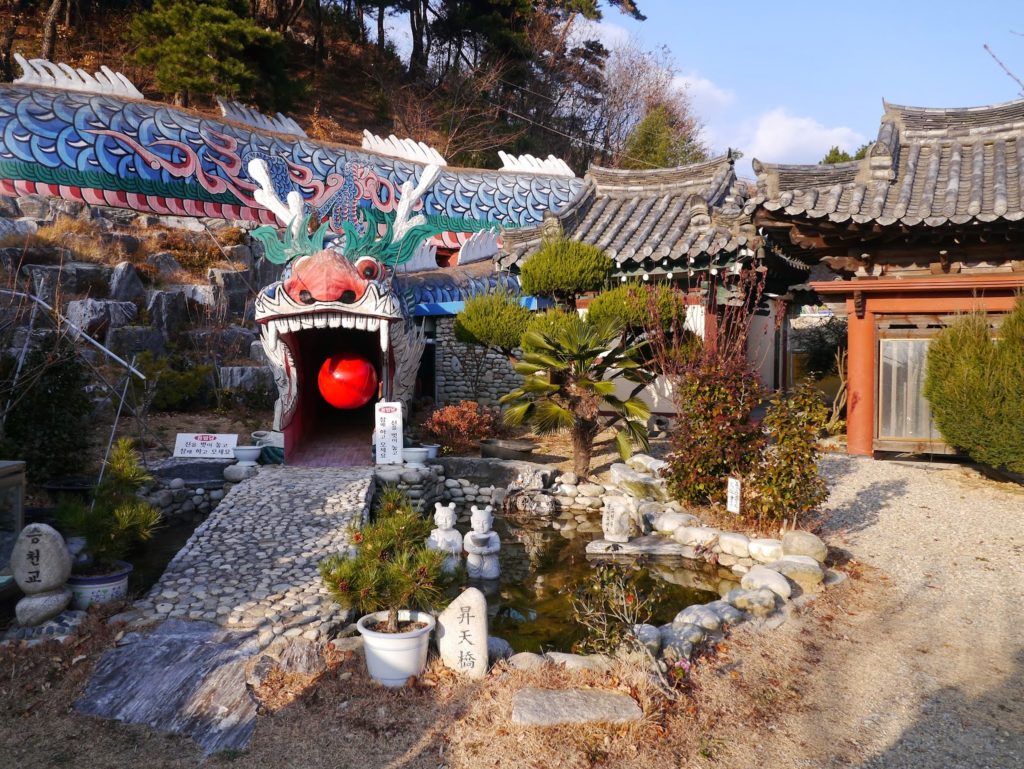
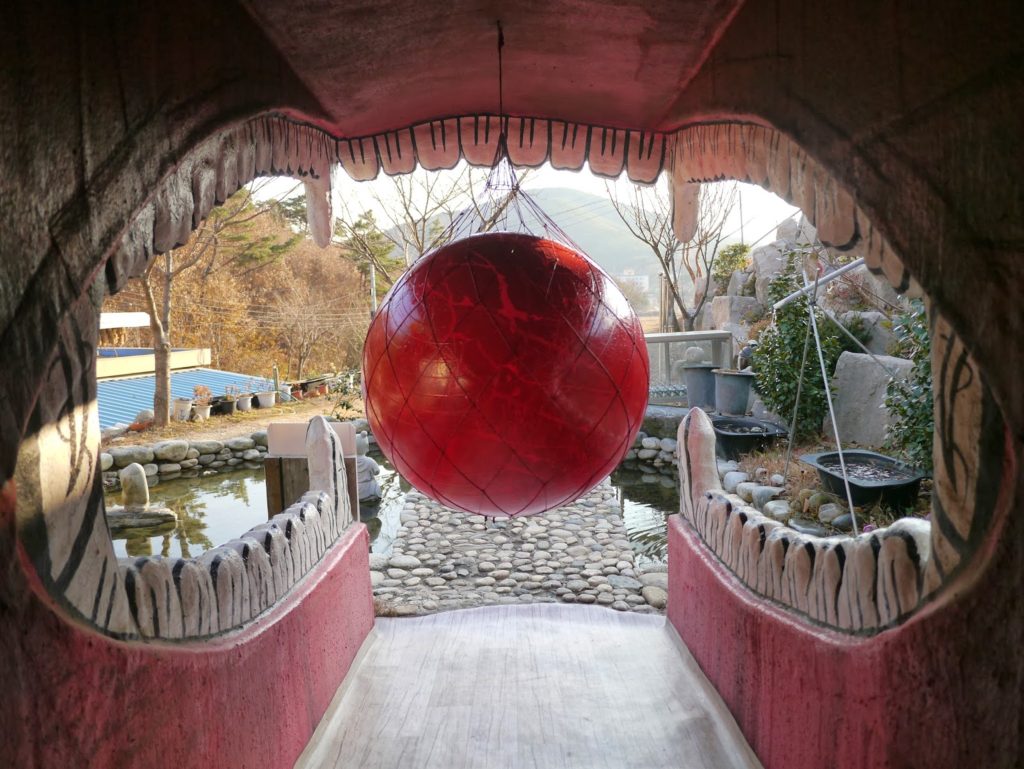
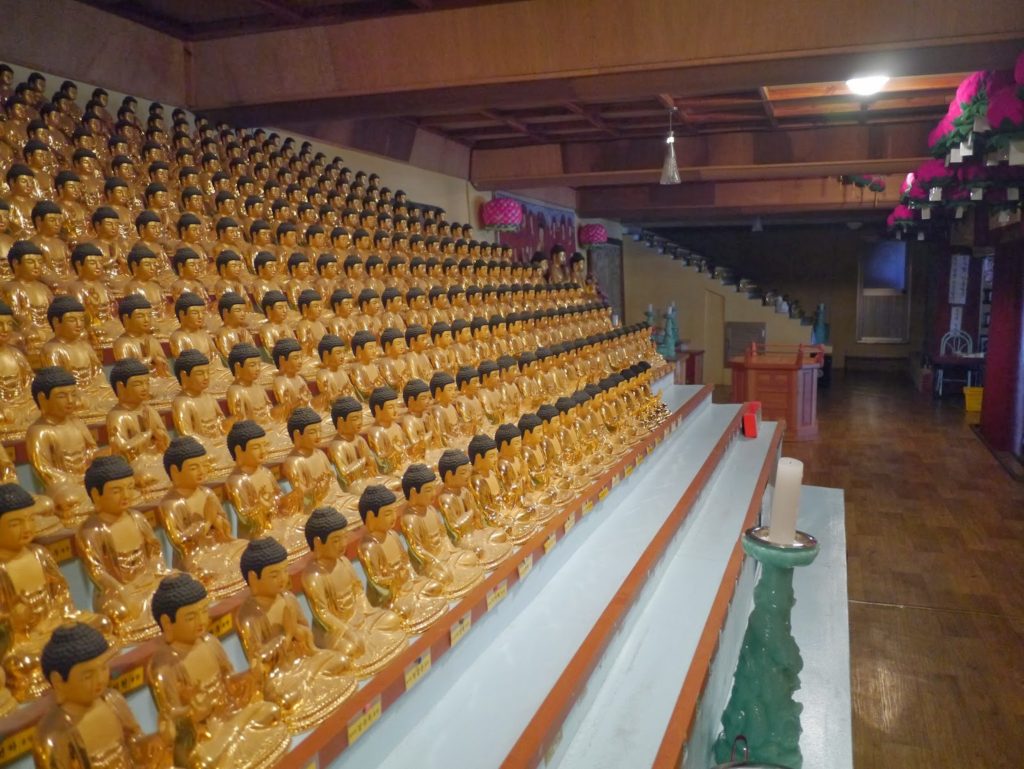
8. Daewonsa Temple (대원사)
Location: Pohang, Korea
This small temple sits near Pohang’s Chilpo Beach. It’s not the biggest temple you’ll see, or one you’ll find on many ‘Top __’ lists. It is incredibly unique, however, in that you literally have to walk into a dragon’s mouth to access the inner sanctuary.
The building is basically a long tunnel that winds up the hillside, and the outside of it is decorated as a dragon’s body. The effect is stunning: a huge dragon coiled around the hill with its jaws gaping to swallow any who enter. The inner sanctuary is just inside, while continuing up the hill will take you through a dragon’s belly filled with Buddhist paintings and statues. Don’t miss this temple if you’re passing through Gyeongsangbuk-do!
- Address: 24 Haean-ro 1545beon-gil, Heunghae-eub, Pohang-si, Gyeongsangbuk-do (경북 포항시 북구 흥해읍 해안로1545번길 24)
- Contributed By: Open Road Before Me
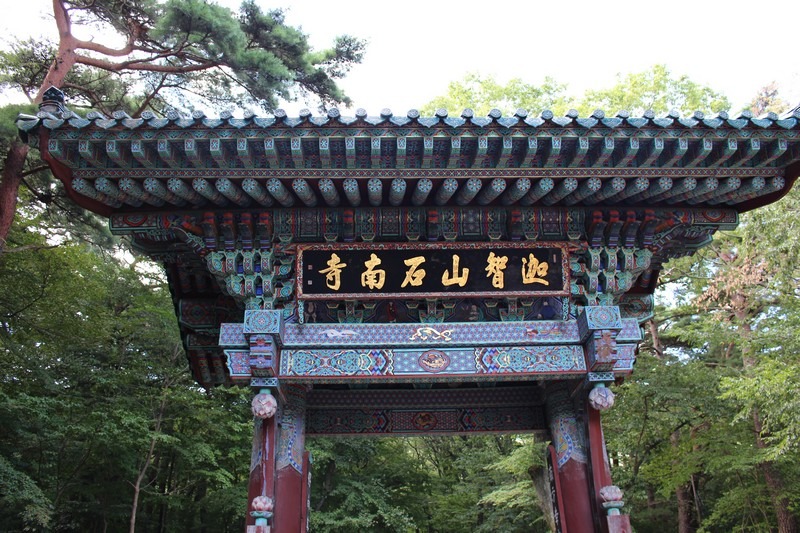
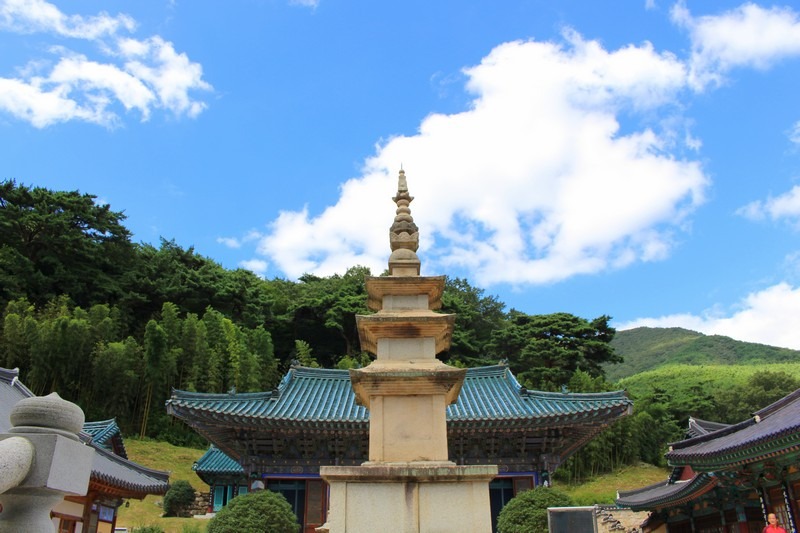

9. Seoknamsa Temple (석남사-울산)
Location: Ulsan, Korea
One of the four major temples of the Gajisan Provincial Park, Seoknamsa Temple has a complex of 30 buildings is a major temple for Buddhist nuns to reside and practice asceticism. A unique factor about this temple is centered on the Sanskrit circles that welcome visitors onto the grounds and rid the bad karma that they may bring along. We might all use a little of that.
The surrounding forests are calm and peaceful and the buildings numerous which means this temple could take some time to walk around and truly enjoy, but it’s worth the short walk into the hills.
- Address: 557 Seoknam-ro, Sangbuk-myeon, Ulju-gun, Ulsan-si (울산광역시 울주군 상북면 석남로 557)
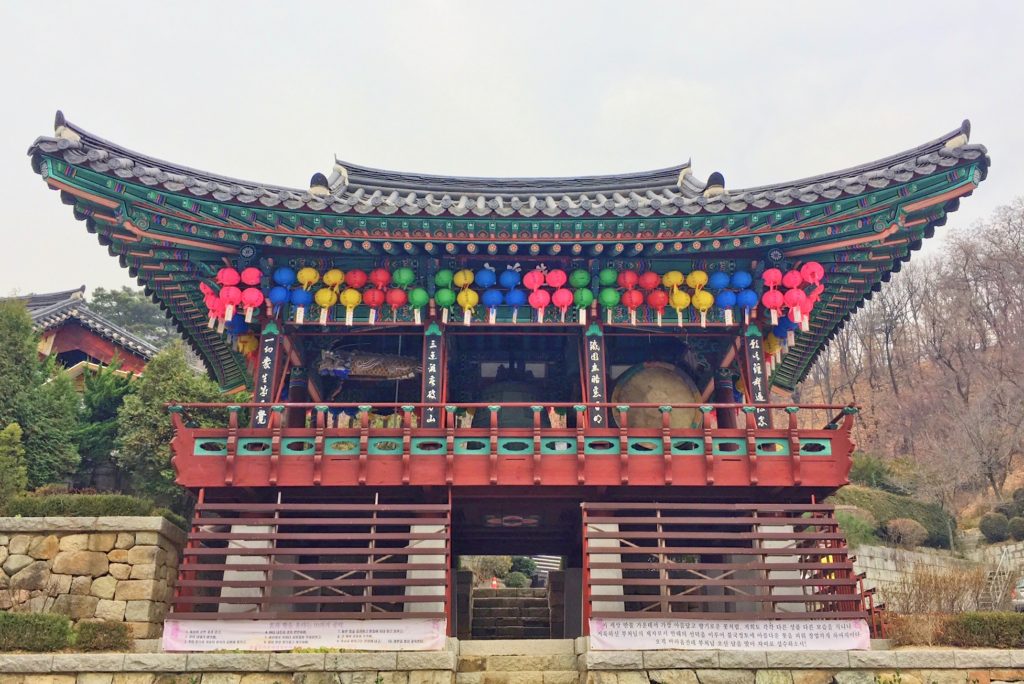
10. Hwagyesa Temple (화계사)
Originally built in 1522 A.D., this temple is located at the foot of Samgaksan Mountain. The temple is a quiet sanctuary tucked away from the bustle of Seoul city. This temple is most famous for being a center for Zen Buddhism and the former home of Korean monk Ven. Seung-Sahn; during his travels, he taught more than 50,000 disciples.
Many monks and nuns from all over the world still travel to Hwagyesa to live and practice there. Hwagyesa is also known for the small stream, Oktakcheon, that runs beside the temple: it is widely known for helping to heal skin and stomach diseases.
- Tour Option: Enjoy a templestay program at Hwagyesa with Trazy. The standard program is two days and you can take a tour of complex, meditate, take part in a tea ceremony and meals with Buddhist teachers on hand.
- Address: 117 Hwagyesa-gil, Gangbuk-gu, Seoul (서울특별시 강북구 화계사길 117)
- Contributed By: The Seoul Child
Interested in partaking in a temple stay program while you’re in Korea?
Most programs take place over two days and you can partake in vegetarian Buddhist meals as monks teach you temple etiquette. Learn meditative methods and chants as you enjoy the serene surroundings.
A temple stay program is a very unique experience and a must try. Some of them even offer intricate tea experiences. Check out this guide to Korean tea so you know what to expect. If you want to read more about my own temple stay experience, check out this post.
If you want to sign up for your own temple stay experience, here are some great options:
- Jogyesa Temple Stay Experience: This temple is right downtown in the heart of Seoul. Due to its location in the popular Insadong/Anguk area, it’s easy to get to, easy to find, and easy to fit into most itineraries if you don’t have time to leave Seoul.
- Geumsunsa Temple Stay Experience: Location in Seoul but within the Bukhansan National Park, this mountain temple provides a quieter and more serene experience while still being located within Seoul. This program is just a short three hour introduction into life in a Korean Buddhist Temple.
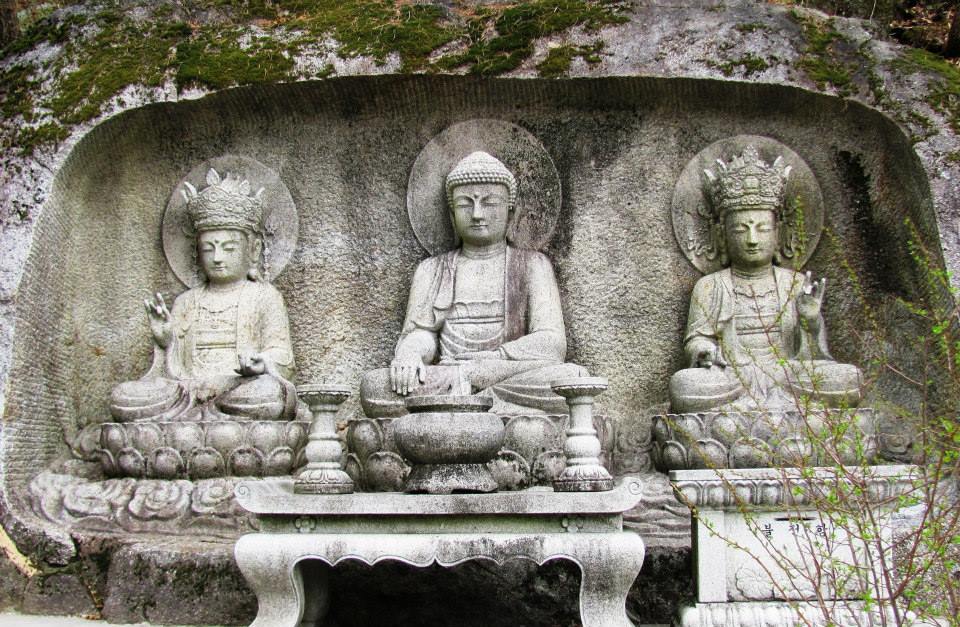
11. Ssanggyesa Temple (쌍계사)
Location: Hadong, Korea
Set at the base of Jirisan Mountain, this temple was founded in 722 and legend has it that a tiger-like spirit guided two disciples to that specific location to build the temple. Vivid colors and golden Buddhas stand out in the densely forested area and the carvings of Buddhas in the rock formations draw one in to take some time for respite and contemplation.
- Tour Option: gorgeous Ssanggyesa Temple in the springVisit the when the cherry blossoms are blooming and let Trazy also take you to the nearby Hwagae Cherry Blossom Festival.
- Address: 59 Ssanggyesa-gil, Hwagae-myeon, Hadong-gun, Gyeongsangnam-do (경상남도 하동군 화개면 쌍계사길 59)
- Contributed By: The Toronto Seoulcialite
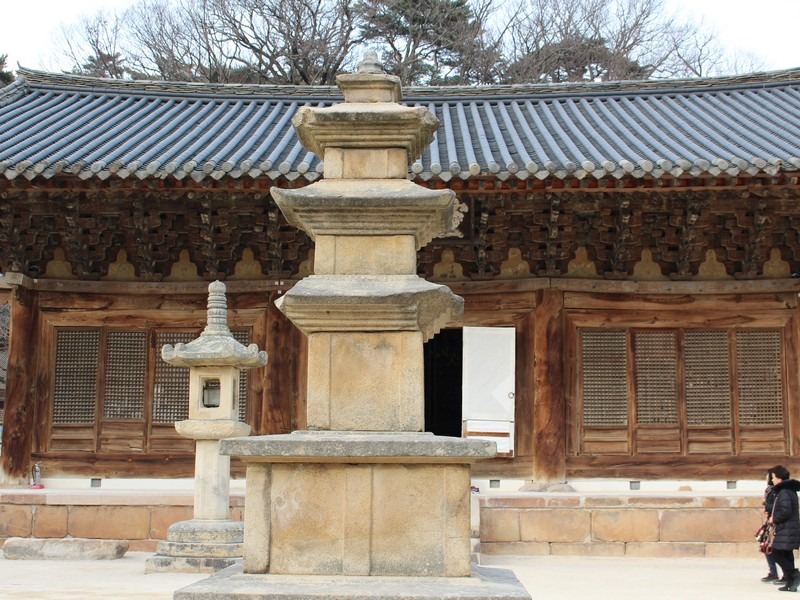
12. Tongdosa Temple (통도사)
Location: Yangsan, Korea
Master Jajang traveled to the Buddhist temple in Yunjisi, China and obtained relics of the historical Buddha and brought him back to Korea to be housed at Tongdosa Temple that was founded in 643. A bone from his skull, his robe and a begging bowl sits within an ancient stone lotus bud on the grounds.
Due to the remains of the Buddha being at the temple, there are no statues of the Buddha in the halls or at the shrines making this a very unique aspect of this temple complex that houses some three dozen temples and 19 associated hermitages.
- Tour Option: Visit this Tongdosa Temple along with Tongdo Sauna with kkday.
- Address: 108 Tongdosa-ro Habuk-myeon, Yangsan-si, Gyeongsangnam-do (경상남도 양산시 하북면 통도사로 108)
- Contributed By: Dale’s Korean Temple Adventures
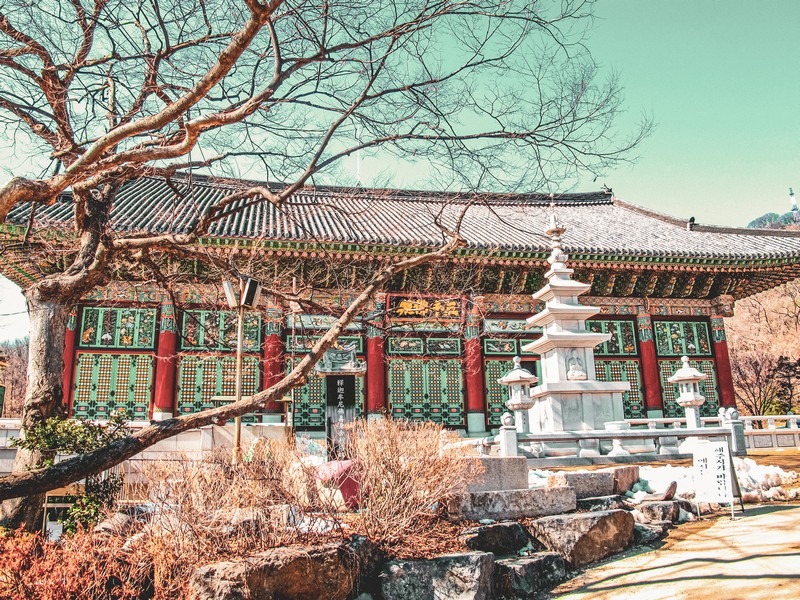
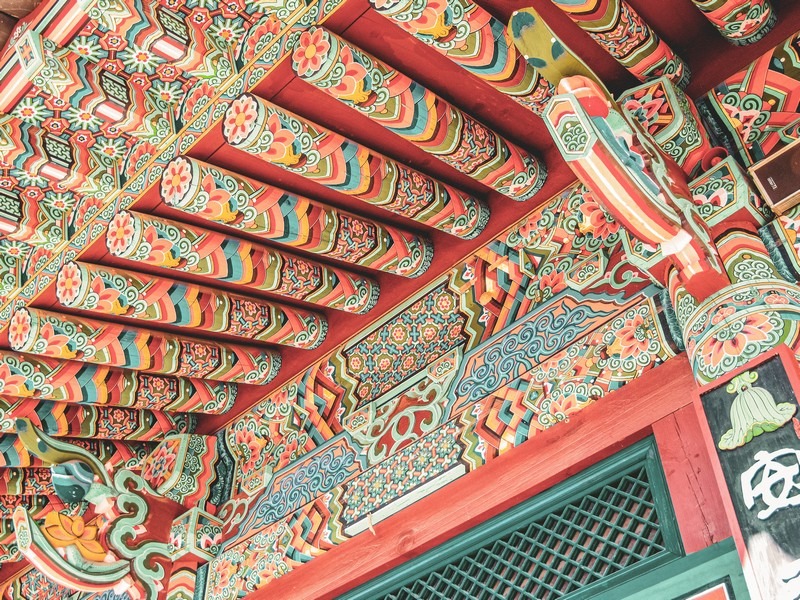
13. Bongwonsa Temple (봉원사)
Location: Seoul, Korea
While many temples that sit in the middle of Seoul are often busy with bystanders and tourists, Bongwonsa Temple manages to maintain the peace and quiet you’d expect of a Buddhist temple.
Thirteen buildings sit on the complex grounds but the one that stands out the most is the 3000 Buddhas Hall that is the largest on the premises and the largest wooden building in Korea. More than that… no nails were used in the building to keep it together. This unassuming Buddhist temple on a hillside of Seoul is a must-see to truly appreciate just how amazingly large the main structure is.
- Address: 1San Bongwon-dong, Seodaemun-gu, Seoul (서울특별시 서대문구 봉원동 산1)
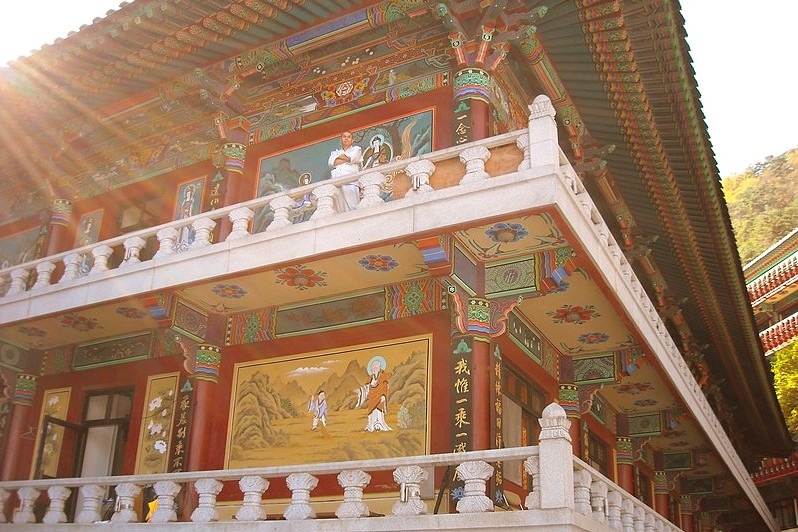
14. Guinsa Temple (구인사)
Location: Danyang, Korea
Guinsa Temple is anything but ordinary and while many people think if they’ve seen one temple, they’ve seen them all, that is just not the case. This temple towers above the rest. Begin the walk up the mountain and you’ll see how these multi-story buildings are just so much taller than the standard buildings.
Guinsa Temple is an absolutely must see and needs to be on every itinerary when on a trip to Danyang. Stop by for lunch, and you can eat for free… if you do a bit of work to prep.
- Tour Option: Head to Danyang for a day trip tour with Trazy visit the must see Guinsa Temple complex along with a cruise on the nearby Chungjuho Lake.
- More Information On The Area: Danyang, Korea: A Guide To The Best Things To See & Do
- Address: 73 Guinsa-gil, Yeongchun-myeon, Danyang-gun, Chungcheongbuk-do (충청북도 단양군 영춘면 구인사길 73)
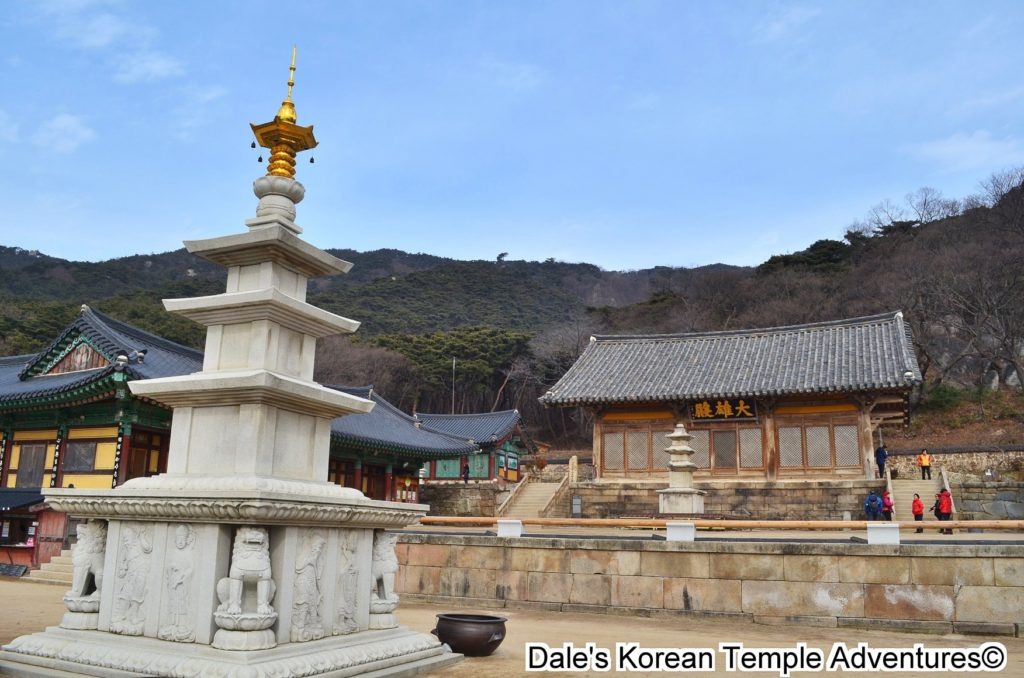
15. Sudeoksa Temple (수덕사)
Location: Yesan, Korea
Housing the oldest building in all of Korea, Sudeoksa Temple has a history that is said to date back to 599AD and is one of the few temples that escaped destruction during the Imjin War from 1592 to 1598. The Daeung-jeon Main Hall, which dates back to 1308 is the oldest building in Korea and alongside it are beautiful pagodas that beckon a visit as well.
- Address: 79 Sudeoksaan-gil, Deoksan-myeon, Yesan-gun, Chungcheongnam-do (충청남도 예산군 덕산면 수덕사안길 79)
- Contributed By: Dale’s Korean Temple Adventure
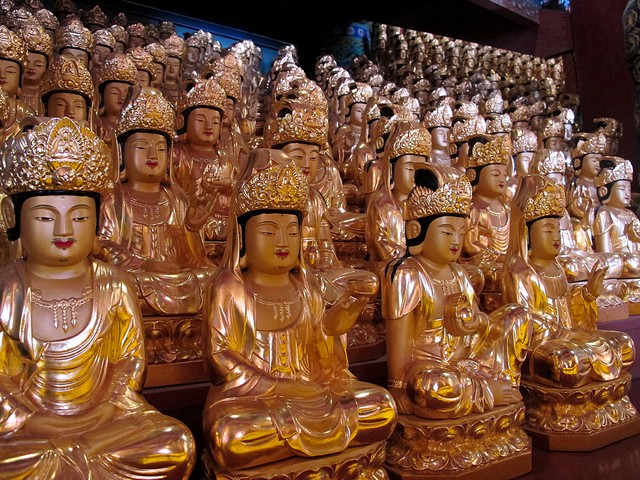
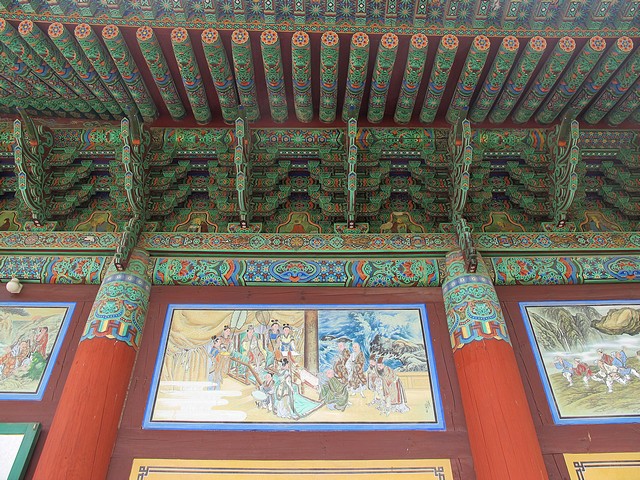
16. Naksansa Temple (낙산사)
Location: Yangyang, Korea
While many people head to the Yangyang area for beaches and summer fun, there is also another reason to head here and that is Naksan Temple. Featuring an 18 meter high Bodhisattva of Mercy, the largest of her kind in the region, she towers and looks down upon the people whiling away on the beaches below.
This temple is considered one of the great eight scenic areas of the eastern region of Korea and it truly deserves to be one. The numerous statues, golden relics and buildings of the complex are astounding.
- Tour Option: Join a day trip tour with Klook and see Naksansa Temple as well as the must see Mt. Seorak, the tallest mountain in the Taebaek mountain range which is nearby.
- Address: 100 Naksansa-ro, Ganghyeon-myeon, Yangyang-gun, Gangwon-do (강원도 양양군 강현면 낙산사로 100)
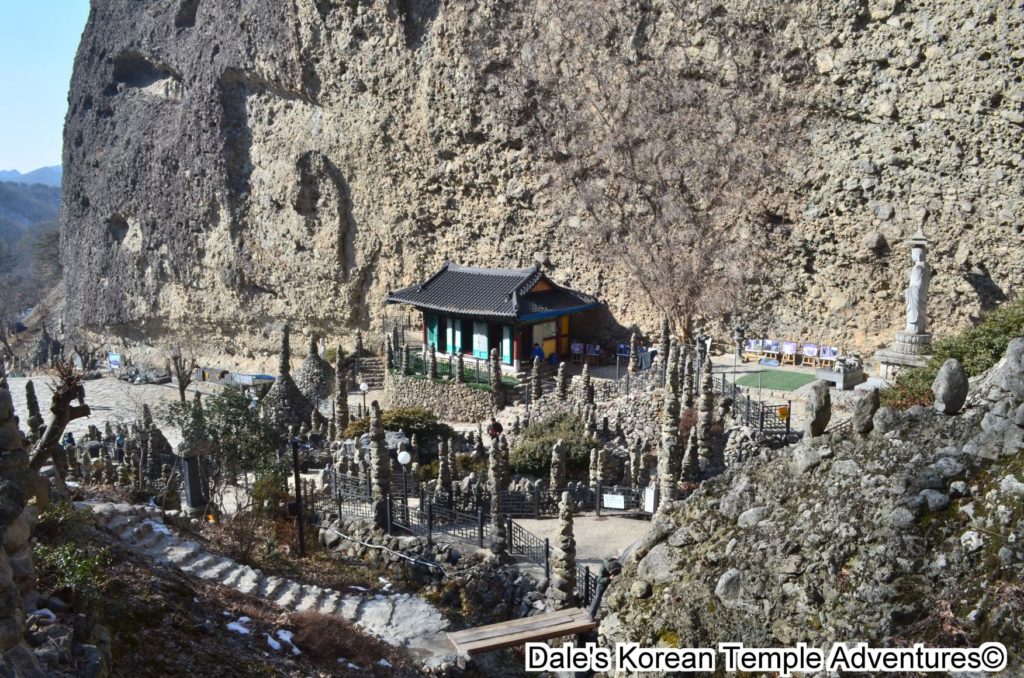
17. Tapsa Temple (탑사)
Location: Jinan, Korea
One of the most unique temples in all of Korea is home to 108 spherical stone pagodas built by one man over a span of 30 years. While the pagodas and structures on the grounds look fragile, they’ve managed to stand over 100 years here which makes them all the more intriguing.
The entire grounds are different from anything else you’ll see in Korea and the pock-marked landscape of the Maisan Provincial Park adds to the bizarre yet stunning complex. Unique, stunning and beautiful are but a few of the adjectives that could be used to describe this complex that is a MUST SEE in Jinan, Korea.
- Address: 367 Maisannam-ro, Maryang-myeon, Jinnan-gun, Jeollabuk-do (전라북도 진안군 마령면 마이산남로 367)
- Contributed By: Dale’s Korean Temple Adventures


18. Bongeunsa Temple (봉은사)
Location: Seoul, Korea
This temple is one of the most popular in the city of Seoul likely due to how easy it is to access in the ritzy Gangnam-gu area. A 23 meter tall statue of Maitreya is the tallest of her kind in Korea and is what draws many here.
Bongeunsa Temple has an impressively long history and as the head temple for the Seon (Zen) sect during the Joseon Dynasty, holds an important place in the history of Buddhism in Korea. From morning rituals to evening lit up prayer calls, this temple is a beautiful place to visit in the heart of the city.
- Address: 531 Bongeunsa-ro, Gangnam-gu, Seoul (서울특별시 강남구 봉은사로 531)
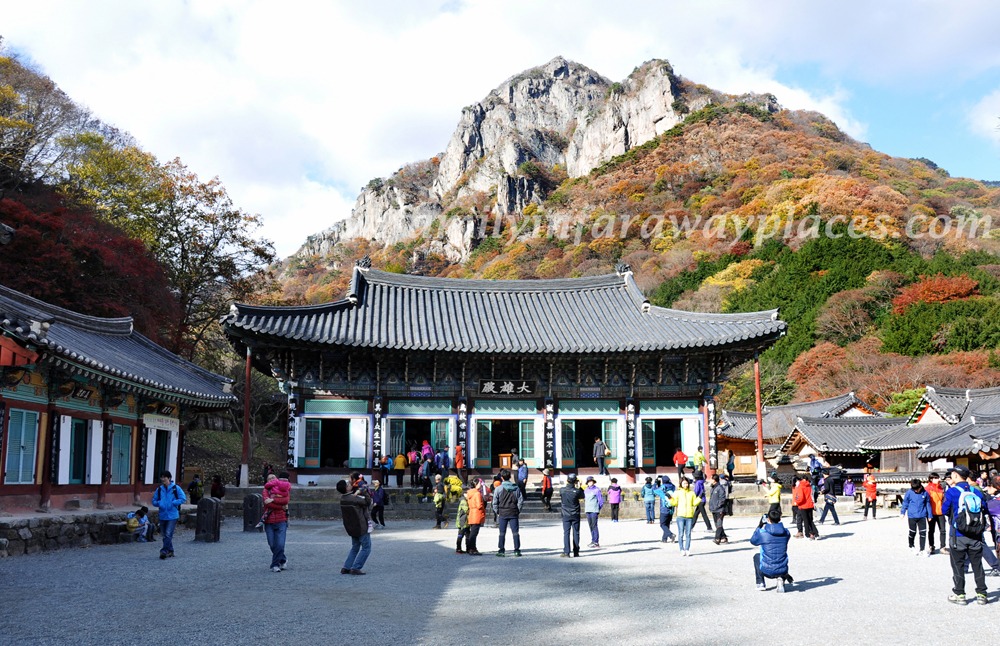
19. Baekyangsa Temple (백양사)
Location: Jangseong, Korea
This temple in Jeollanamdo is beautiful all year round but seems to be on everyone’s list of places to visit when the fall leaves start to change color. The mountain and walkways come alive with yellow, orange and red leaves.
The temple grounds have an impressive backdrop of a large mountain rock formation. Follow along a tree lined path next to a winding river to the temple grounds. Photographers and hikers flock here during the fall and whenever there is a beautiful coating of snow so it can get really busy on the weekends at these times. For a more quiet visit try to make your trip during the week when there are fewer crowds.
- Address: 1239 Baekyang-ro, Bukha-myeon, Jangseong-gun, Jeollanam-do (전라남도 장성군 북하면 백양로 1239)
- Contributed By: Family In Far Away Places
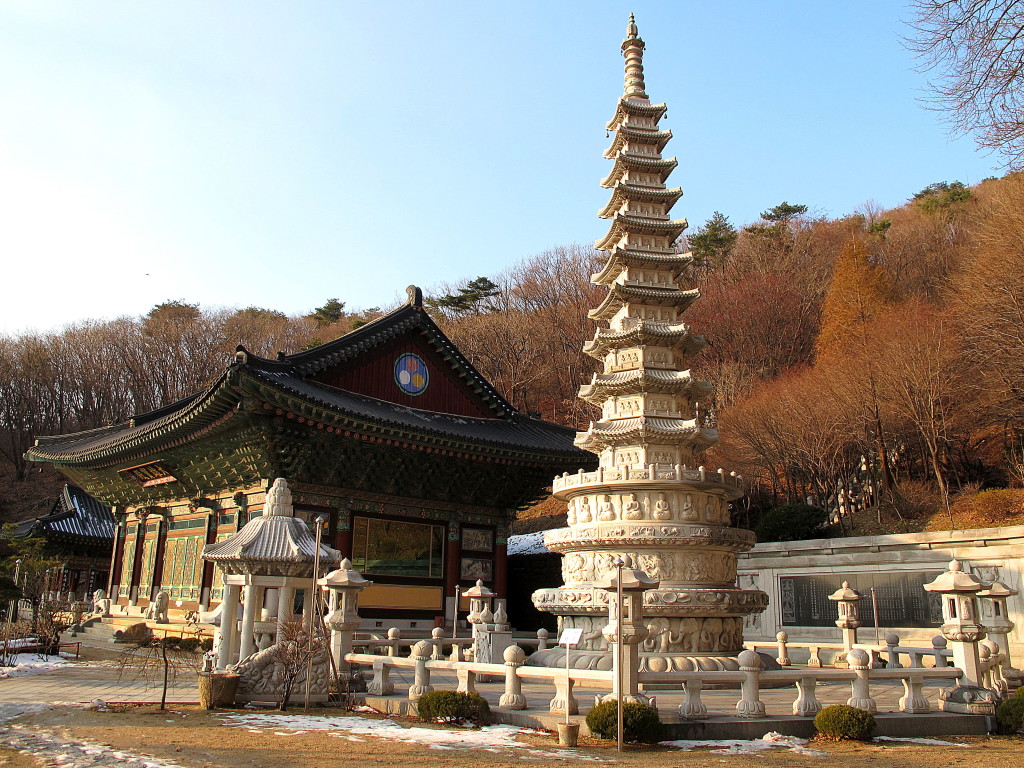
20. Mangwolsa Temple (망월사)
Location: Uijeongbu, Korea
Mangwolsa Temple is the oldest temple within the Namhansanseong Fortress walls. Once housing Buddhist monk soldiers who practiced Buddhism and protected the walls from invaders, the temple has stood in this spot since 1624.
This temple offers a different perspective to the role that Buddhist monks played in the history of Korea while at the same time offering some stunning views of the surrounding mountainsides. The pagoda on the grounds is also gorgeous and the intricate carvings could leave any visitor walking in circles for some time to take it all in.
- Address: 211-500 Mangwol-ro 28bun-gil, Uijeongbu-si, Gyeonggi-do (경기도 의정부시 망월로28번길 211-500)
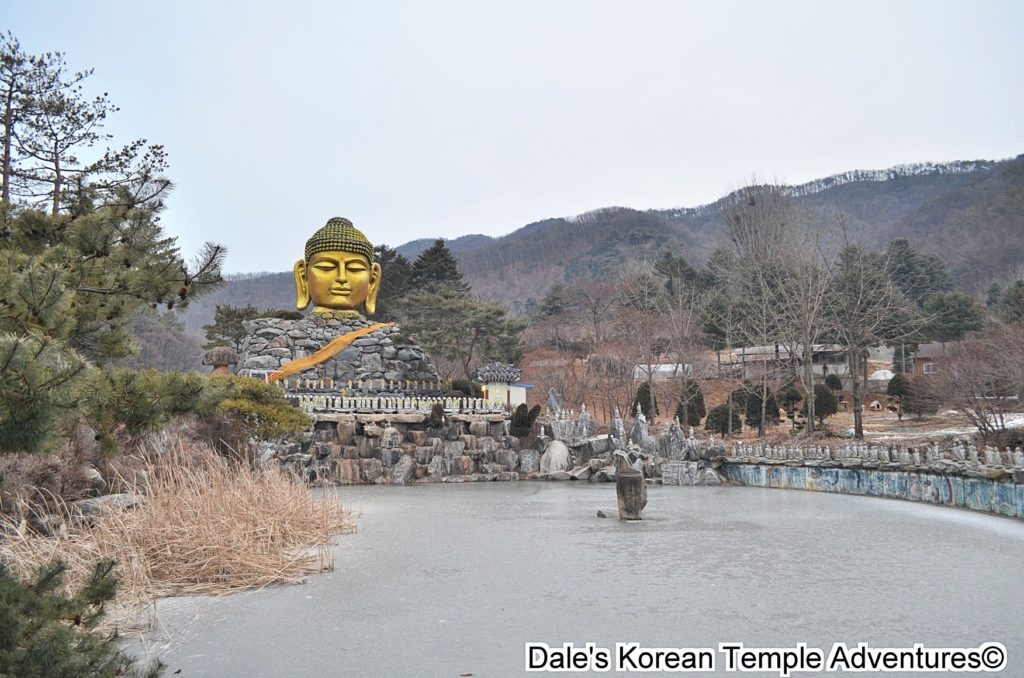
21. Waujeongsa Temple (와우정사)
Location: Yongin, Korea
While this temple is not very old, only just built in 1970, it makes up for it with the unique factor. A displaced monk during the Korean War came to this spot and built this temple that is the birthplace to the highly unique Korean Buddhist Nirvana Order.
The first statue that welcomes visitors is a huge golden Buldu (Buddha’s head) that is recognized by the Guinness Book of World Records as the largest at eight meters high. That statue is just the invitation to the unique statues and buildings that await.
- Address: 244-4 Haegok-dong, Cheonin-gu, Yongin-si, Gyeonggi-do (경기도 용인시 처인구 해곡동 224-4)
- Contributed By: Dale’s Korean Temple Adventure

22. Jingwansa Temple (진관사)
Location: Seoul, Korea
The westernmost of the four major temples of Seoul, Jingwansa Temple was built in 1011 and once housed the royal Hyeon-jong who had been kicked out of his palace during a power struggle. Once he took his place again and became king, Jingwansa was put under special protection.
This is the only Buddhist temple in Seoul to serve Suryukje, a ceremony to provide food and Buddhist teachings to the spirits and starved demons. The beautiful complex is worth a trip into the forests of Bukhansan National Park to see and just down the path is the beautiful Eungpyeong Hanok Village that is still relatively unknown. The colors are astounding and the intricate painted works are worth hours to truly enjoy them.
- Address: 73 Jingwan-gil, Eunpyeong-gu, Seoul (서울특별시 은평구 진관길 73)
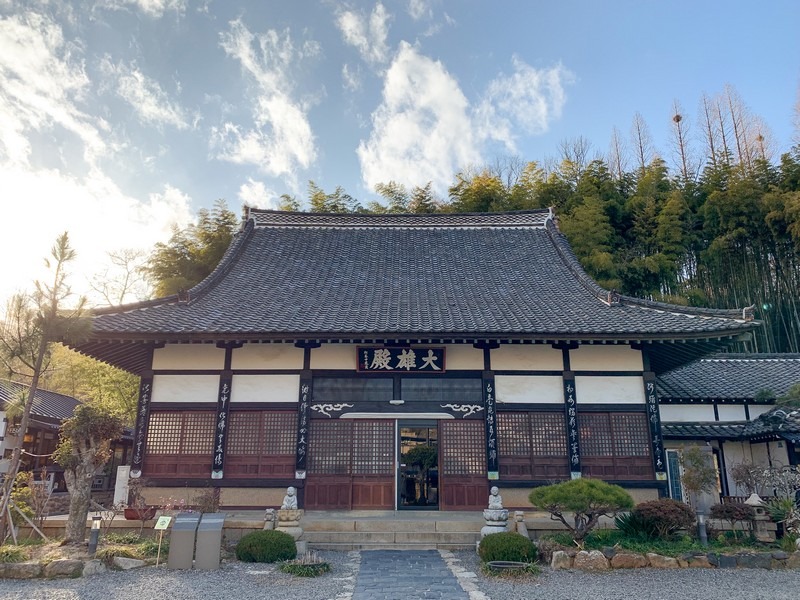
23. Dongguksa Temple (동국사)
Location: Gunsan, Korea
One of the most interesting temples in the country is one that was constructed in the Japanese style and is the only one that remains of that style in the country today. Founded by Japanese Monk Woochida in 1913, it’s really intriguing to see.
It’s a working temple with a cafe on the grounds for visitors and is a part of a village area of Gunsan, Korea that has some of the last Japanese-style buildings from the Japanese colonization in the country. Don’t miss it when you visit the port city of Korea.
- Address: 16 Dongguksa-gil, Gunsan-si, Jeollabuk-do(전북 군산시 동국사길 16 동국사)
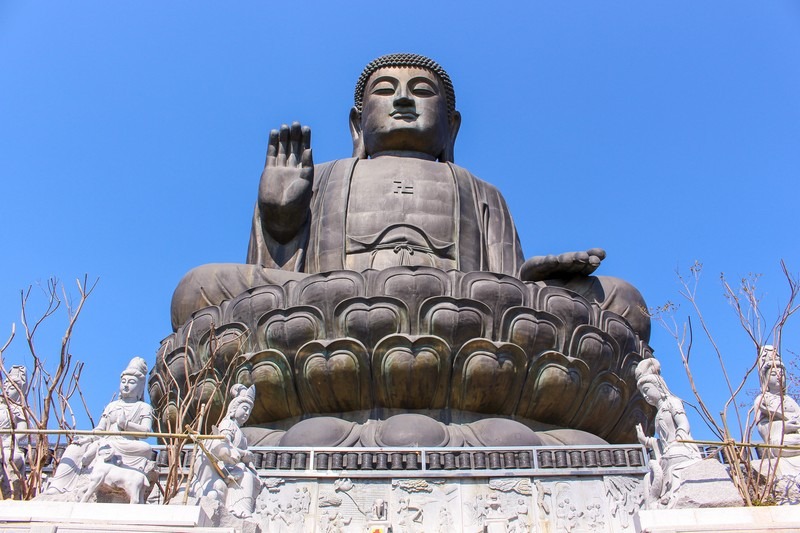
24. Nammireuksa Temple (남미륵사)
Location: Gangjin, Korea
This temple is really stunning and though it isn’t old, has the largest seated brass Buddha in Asia which is its claim to fame but it also has an extremely flower loving monk that planted millions of azalea bushes so in the spring this temple is awash with gorgeous pinks, reds, and purples.
This temple also has huge Victoria lotus lily plants that grow in a pond on the grounds and monks actually sit on them in the late summer months. It’s a pretty off the beaten path in the middle of nowhere spot to visit, but is a beautiful find. Learn more about the temple and how to get to Nammireuksa Temple here.
- Address: 24-13 Pungdong 1-gil, Gundong-myeon, Gangjin-gun, Jeollanam-do (전남 강진군 군동면 풍동1길 24-13)
Temples in Korea FAQ
What are temples called in Korea?
Temples are called sachal, sawon, or garam in Korean and are places where Buddhist monks undergo religious training and religious rituals.
What is the most famous temple in Seoul?
There are a number of temples in Seoul, Korea. The two you’ll most often hear about are Jogyesa Temple right downtown near Insadong and Bongeunsa Temple in Gangnam.
Did you like this post? Pin It!
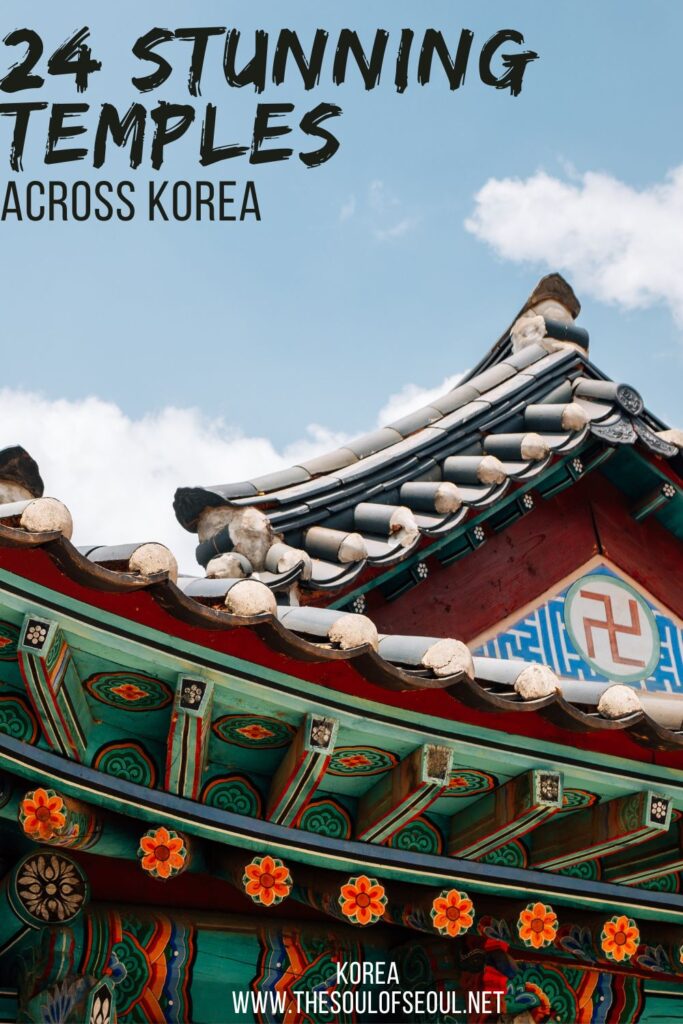
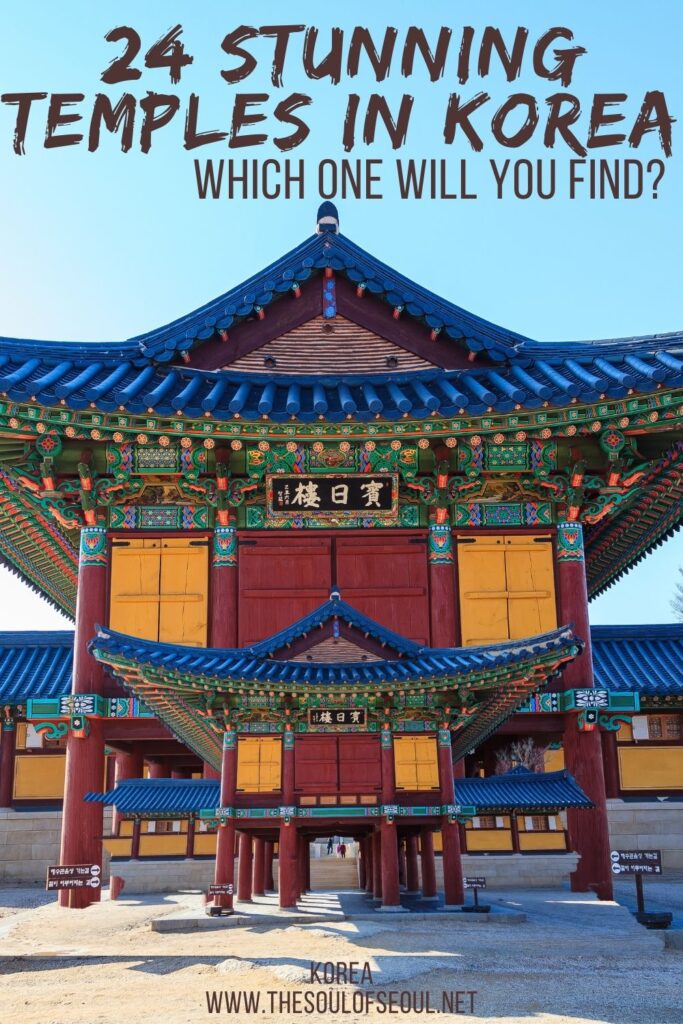
Photos and information have been provided by the bloggers linked above.


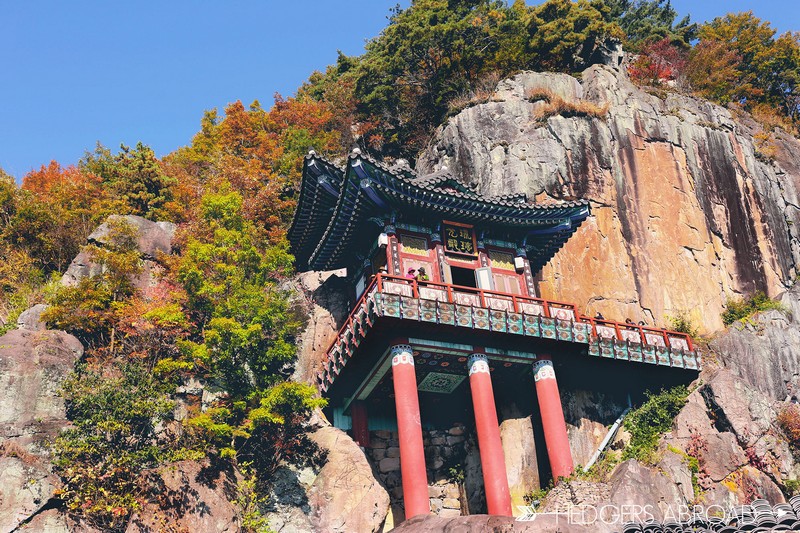
23 Comments
ann kim
I am a Korean native. I wound love to go back and visit these temples again. It has been 40 years since i left Korea. I am proud of rich culture and history.
Rocio Cadena
What a great and comprehensive temple list! I’ll be honest though: I’ve seen a handful and I know I’ve seen them all. I still appreciate them but I doubt I’ll ever plan my day trips based on temples. It’s like when I lived in Italy and regardless of the magnificence of the churches, they all started to blend after a few months.
Kate Carter Hickey
Thanks so much for including my information! I actually was standing behind Expat and the City when she took the picture of Seokbulsa. It was a nice little walk and I loved the carvings. Great list…so many temples in Korea holy moly!
Expat and the City
So many beautiful temples! This is why I love Korea (among many other things!). I have many temples I need to check out before leaving Korea!
Nicholas (Journal of nomads)
All these temples are absolutely stunning.My girlfriend and I will visit Korea next year and we just can’t wait to visit all of these beautiful places.It’s amazing to realize that there are so many of these beautiful temples in Korea alone and that they are all very easy to access and visit.“Saseongam Hermitage” looks amazing!!
Hallie
You’ll have an amazing trip here! There is so much to see and do. ^^
Julie Cao
I dont know Korea has so many amazing temples. #8 Magoksa Temple is my favorite and the surrounding is so beautiful. I think it would be interesting to participate in the temple stay program and get to know more about the life of the monks and the knowledge of Buddhism.
Hallie
Yes, a temple stay program is so interesting and definitely worth it. ^^
Nicole
This is an awesome list. I’m ashamed to admit that I still haven’t visited the seaside temple in Busan, despite living so close by! There’s something about temples near the ocean that are just so peaceful. I visited another great one in Namhae!
Travel with Karla
The pictures are amazing. I’ve been missing out a lot. I’ve only been to Jogyesa Temple and it’s not even on the list. LOL. Thanks for this post, I shall visit some of them next year. <3
Hallie
Yeah.. Jogyesa is very popular since it’s in Insadong, but there are others that just are a bit more intriguing for other reasons. Jogyesa is a good stop if you don’t have much time in Korea though.
Wendy Flor
Whoaa! So many beautiful temples. I’ve been to a few and would love to go to these stunning ones among your list: Seokbulsa Temple, Tapsa Temple and Guinsa Temple.
Gareth Thompson
Having spent a year in Korea some years ago, my first time living in another country, I was really surprised about the number of awesome temples on display there. Certainly, when you consider the amount of coverage temples in neighboring or nearby countries get, I really think this aspect of Korea is often unfairly overlooked. Anyway, great post and you certainly managed to collect at least some of the highlights
MARINA
OMG! What an amazing temple list! I don’t know much about Korea but I have heard it’s getting popular and now I understand why!
All those temples are out of my mind… the one that caught my attention was “Saseongam Hermitage” that seems to be located inside a cliff!
Congrats for the pics! Amazing…and thanks for the brief explanation to each of them!
Hallie
I think it’s getting popular because of K-pop and dramas BUT there are certainly some beautiful cultural spots to see if you do visit.
sophie
Hwagyesa Temple is something where I went last year and I got there what I wanted which is “PEACE” 🙂 One of the best in korea , I recommend it to everyone! Thanks again for the detailed list . Cheers!
Joice
really interesting to see
Chasing KM
We loved Guinsa temple in Danyang, and really enjoyed the short hike up to ssangyesa in Jirisan, along wioth quite a few others. They do seem to blend into each other somewhat, but every now and then we are truly surprised by the beauty and intricacy of them. Ive had the water temple in Busan on my list for ages and still haven’t got around to it!!
Hallie
I really enjoyed the one in Busan.. though maybe more so just because I like the sound of water lapping on the cliffs. Added a sense of calmness.
Shelley @Travel-Stained
We have been seriously slacking on our temple visiting in Korea…the ones I have visited seemed so similar in a lot of ways, we kind of stopped bothering (shame), but some of these are pretty incredible. I’d love to check out Saseongam Hermitage, Seokbulsa, and Waujeongsa Temple sometime. That Buddha head is too creepy cool.
Hallie
Yes, you’ll definitely have to get back out there. There are some really beautiful ones and some quite unique ones. My list just got longer!
Hedgers Abroad
This list of temples is awesome! Ryan is in love with all temples so I am sure we will soon be checking out a few of these. Thanks so much for including us in this collaboration!
Hallie
Of course! There are some really neat ones I didn’t know about either that are now on my list too. ^^